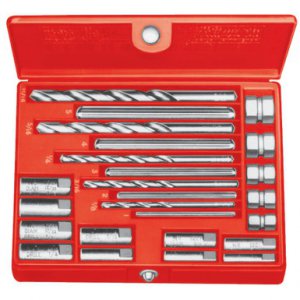Are the back side if the bolts exposed? If so clean the BeJeezus out of them best as possible.I was doing a transmission oil change, and I broke 3 bolts so far. I was very careful, but I didn't believe penetrating oil would work, or if I would have time to wait for them to penetrate.
So after 3 broken bolts, I am ready to accept being wrong, and hopefully there is some penetrating oil that would work helping me remove the rest of the bolts, and figure out how to drill the other bolts out.
Is there a penetrating oil that would work with steel bolt on aluminum?
I may try again, with a hammer hitting the bolt head a few time before removing them, but I think I need some help.
Also, any tip on how to drill these out? I think alignment is the hardest. Since it's 10mm socket sized bolt, it's very small, and I don't know if tiny bolt extractor will be able to remove them. The other option would be larger bolt, or using inserts.
Often on small steel bolts into Aluminum the corrosion is just below where they break
My method involved cleaning really well , wire brush and pick out any corrosion you can see , heat , tap it , try to loosen it.
I will try and work the bolt back and forth.
If you can get a good straight shot at drilling them its probably the quickest way.


